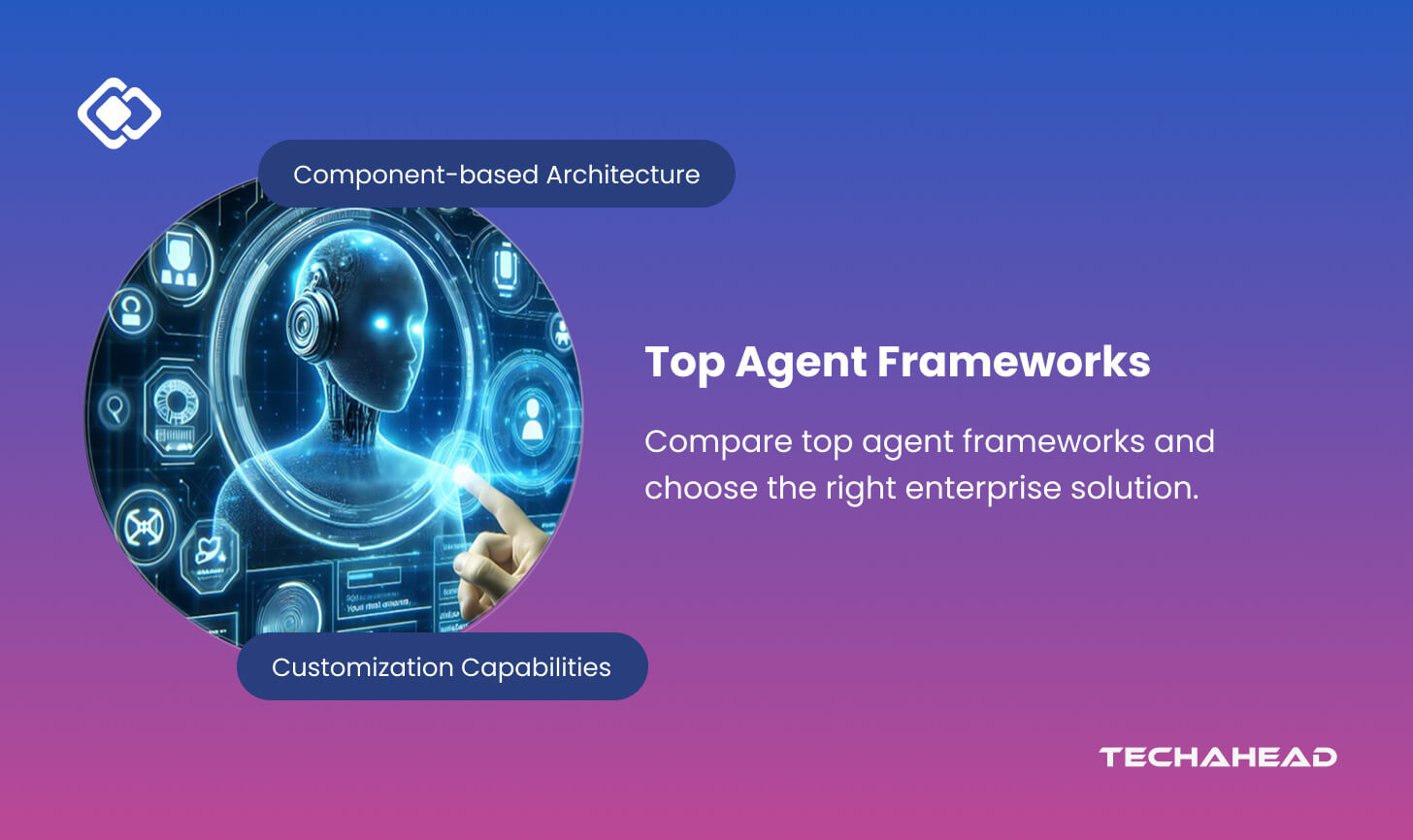AI Agents, and Copilots are not mere buzzwords, but hard reality of the modern-day business world, because now, they are transforming and changing how businesses operate, make decisions, and deliver value to investors and customers.
And we have numbers to prove this.
According to CB Insights research, the enterprise AI agents and copilots market reached $5 billion in 2024 and is projected to grow to $13 billion by end of 2025, a staggering 150%+ year-over-year growth rate.
However, not everyone is able to experience the fruits of this revolution.
McKinsey research reveals a strange Gen AI paradox, as per which, while nearly 80% of companies report using generative AI, 80% of those using Gen AI report no significant improvement in their bottomline.
The challenge isn’t the technology itself, but the integration complexity.
It’s baffling, but nearly 70% of Fortune 500 companies are using Microsoft 365 Copilot, but less than 10% of these organizations report scaling of their operations or workflows beyond the pilot stage.
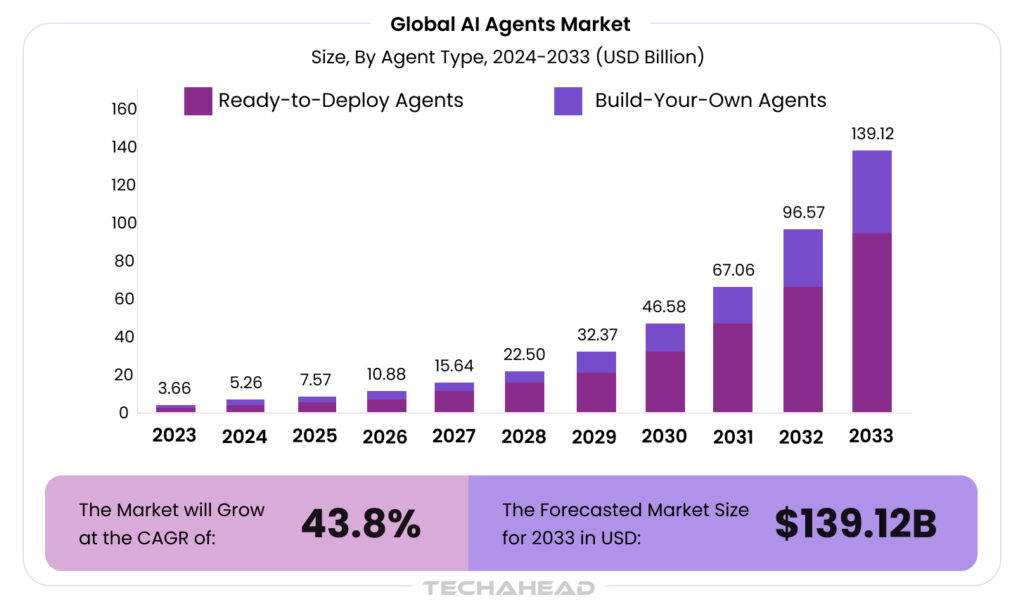
Why is it so?
This blog uncovers the strategies, technologies, and proven approaches for building AI agents and copilots that complement and enhance enterprise systems rather than creating new silos, supported by real-world case studies demonstrating measurable business outcomes.
Key Takeaways
- Enterprise AI agents market reaching $13 billion by 2025, growing 150%+ annually.
- Successful integration requires modular APIs, middleware connectivity, and robust security governance frameworks.
- Klarna’s AI handles 2.3 million monthly conversations, equivalent to 700 full-time agents.
- REST APIs, NLP, and RAG enable seamless enterprise system connectivity and intelligence.
- Common barriers include legacy compatibility, latency issues, data silos, and change management.
- Mature implementations achieve 40-70% request deflection with measurable ROI within 6-12 months.
- Continuous learning through feedback loops drives 15-20% performance improvements over time.
Understanding AI Agents and Copilots in Enterprise Context
Defining the Difference
To deploy AI agents for enterprise workflows, we first must understand the difference between AI Agents and copilots: This difference is not mere semantic nuance, but goes deep with different interaction models and integration requirements.
AI Copilots function as collaborative assistants working alongside humans within specific workflows.
They provide real-time, context-aware suggestions and automate routine subtasks while keeping humans in control. Key characteristics include human-in-the-loop operation, context awareness through enterprise data access, recommendation-focused suggestions, and application-embedded deployment.
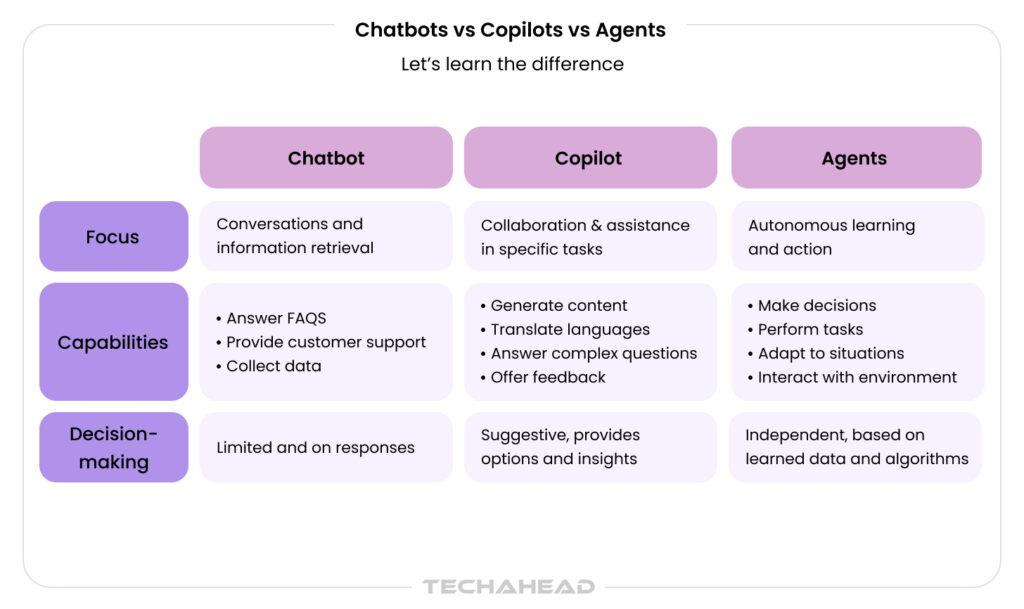
AI Agents operate with greater autonomy. Gartner forecasts that by 2028, 33% of enterprise software applications will include agentic AI, up from less than 1% in 2024. These systems perceive their environment, plan multi-step workflows, make decisions, and execute actions with minimal human oversight. They demonstrate autonomous operation, goal-oriented behavior, multi-step reasoning, and proactive problem-solving.
Enterprise Workflow Integration Challenges
Modern enterprises operate through interconnected systems accumulated over decades: ERP platforms, CRM databases, legacy mainframes, cloud applications, and custom-built tools. Integrating AI into this complex ecosystem presents significant challenges:
System Heterogeneity: Enterprises typically run 50-100+ distinct software applications, each with different APIs, data formats, and authentication mechanisms. A customer service copilot might need to access CRM records, billing systems, product catalogs, and support platforms—all with different integration requirements.
Data Silos: Critical information remains trapped in disconnected systems. Sales data in Salesforce, financial records in SAP, customer communications in Microsoft 365, and operational metrics in custom dashboards create fragmentation that limits AI effectiveness.
Security Complexity: Enterprise security models involve intricate role-based access controls, data classification schemes, and compliance requirements. AI agents must respect these boundaries while maintaining security and compliance standards like SOC 2, HIPAA, and GDPR.
Performance Requirements: Real-time workflows demand sub-second response times. Yet comprehensive enterprise data retrieval, LLM inference, and action execution all consume time. Balancing thoroughness with speed remains a persistent challenge.

Key Technologies Enabling Seamless Integration
APIs and Middleware for Enterprise Connectivity
Application Programming Interfaces (APIs) serve as the connective tissue enabling AI agents to interact with enterprise systems. Modern integration architectures rely on several approaches:
REST APIs dominate enterprise integration due to their simplicity and ubiquity. Microsoft’s Copilot APIs, now generally available, provide REST endpoints that enable developers to integrate Copilot capabilities into custom applications. These APIs expose functions for content retrieval across Microsoft 365, meeting summarization, user interaction export, and custom agent orchestration.
API Gateway and Middleware Platforms abstract integration complexity. Enterprise service buses like MuleSoft, Dell Boomi, or Azure Logic Apps provide protocol translation, authentication management, rate limiting, data transformation, and centralized monitoring.
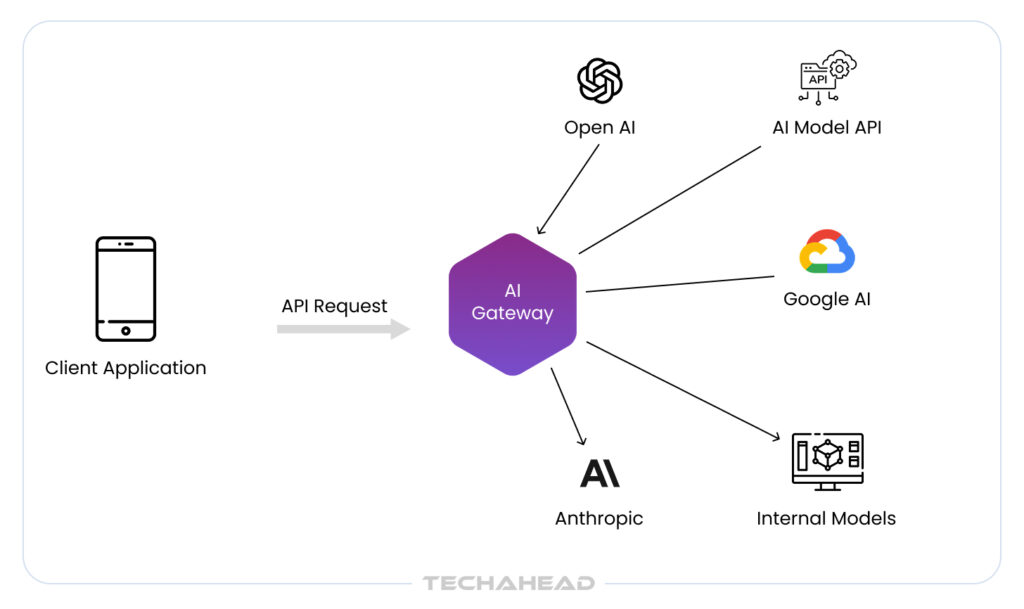
ServiceNow and Microsoft’s recent integration demonstrates enterprise-scale orchestration: their joint AI Control Tower provides centralized governance for managing and monitoring intelligent agents across both platforms, enabling enterprises to deploy agents that seamlessly interact with workflows while accessing Microsoft 365 data under unified security controls.
Natural Language Processing and Task Orchestration
Natural Language Processing (NLP) transforms how humans interact with enterprise systems, eliminating the need to learn complex interfaces or navigate nested menu structures.
Intent Recognition identifies what users want to accomplish. Modern LLMs excel at understanding requests across varying phrasings—”Show me Q3 sales numbers,” “What were our revenue figures last quarter,” and “Pull up third quarter sales data” all map to the same underlying intent.
Context Management maintains conversation state across multiple turns. Enterprise workflows rarely complete in single interactions. A procurement agent might need to ask clarifying questions while remembering previous exchanges and building toward task completion.
Task Orchestration coordinates multi-step workflows across systems. An invoice processing agent might extract data from PDF invoices, validate vendors, match purchase orders in ERP systems, check budget availability, route for approval, and schedule payment—each step involving different systems, APIs, and business logic.
Cloud Platforms for Scalable Deployment
Cloud infrastructure provides the computational power, storage, and services necessary for enterprise-scale AI deployment.
Elastic Scalability: Cloud platforms automatically scale resources based on demand. An HR copilot might handle 100 queries during normal hours but 10,000 during annual enrollment periods. Azure, AWS, and Google Cloud automatically provision additional capacity during peaks and scale down during quiet periods.
Managed AI Services: Cloud providers offer pre-built AI capabilities that accelerate deployment—Azure OpenAI Service provides enterprise-grade access to GPT-4 with Microsoft’s compliance guarantees, AWS Bedrock supports multiple models including Claude and Llama, and Google Vertex AI offers integrated training and deployment.
Hybrid Architectures: For latency-sensitive applications, edge deployment brings AI closer to users. Microsoft’s Windows Copilot Runtime includes compact Phi-3 models for quick, local reasoning without network latency, escalating to cloud-based GPT-4o for complex reasoning.
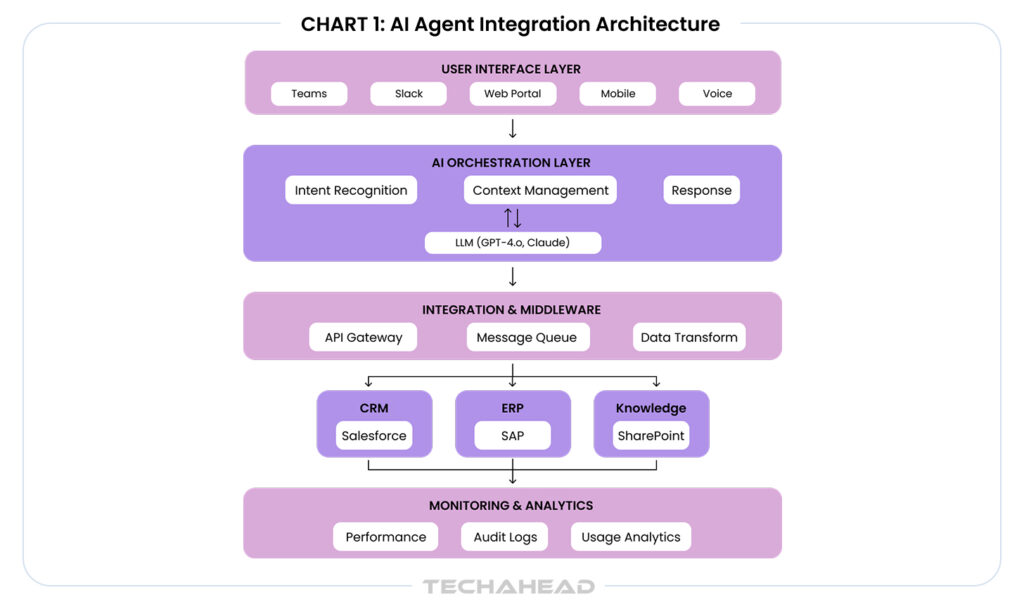
Source: TechAhead AI Team
Real-World Case Studies: AI Integration Success Stories
Case Study 1: Klarna’s AI Assistant – Customer Service at Scale
Organization: Klarna, Swedish fintech company with 150 million active users globally
Challenge: Manual customer service required approximately 3,000 full-time agents to handle inquiries across 23 markets in 35+ languages, with average resolution times of 11 minutes and variable customer satisfaction.
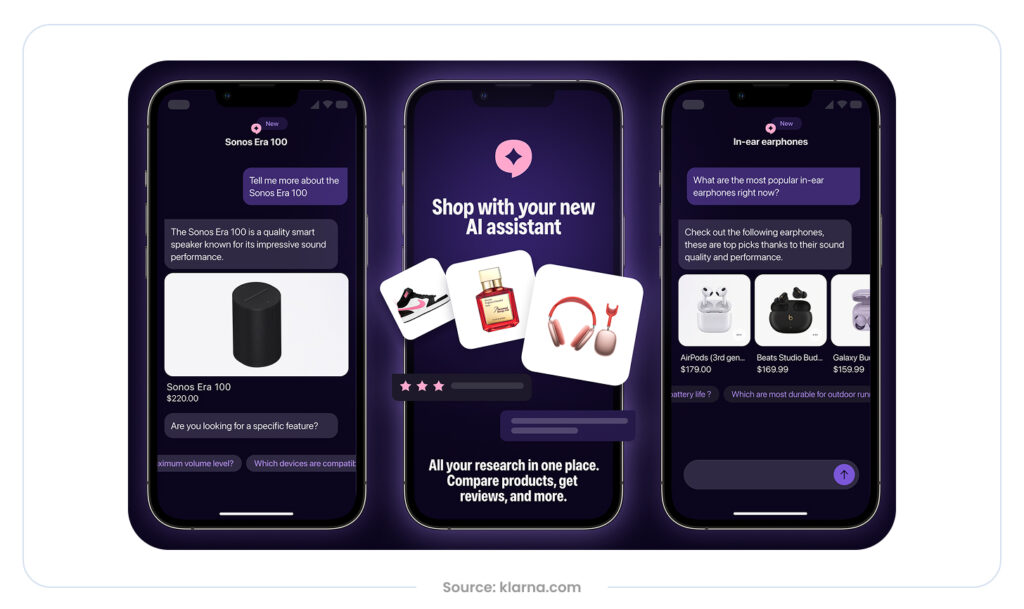
Solution: AI assistant powered by OpenAI, launched February 2024
Results (First Month):
- 2.3 million conversations handled—two-thirds of total customer service volume
- Equivalent to 700 full-time agents in processing capacity
- Resolution time reduced from 11 minutes to under 2 minutes
- 85% customer satisfaction score, matching human agent performance
- 25% reduction in repeat inquiries through improved accuracy
- $40 million projected profit improvement for 2024
- 35+ languages supported with 24/7 availability
Integration Architecture: The system doesn’t replace Klarna’s infrastructure but enhances it through intelligent orchestration. A triage agent classifies incoming inquiries, domain-specific agents handle categories like refunds and payment issues, knowledge retrieval accesses policy databases and transaction history in real-time, and a quality assurance agent reviews responses before delivery. Complex cases escalate seamlessly to human agents with full context.
Key Success Factor: Continuous improvement through observability infrastructure tracking sentiment, resolution confidence, and business metrics. Within the first month, feedback loops improved containment rates by 12 percentage points through prompt refinement and routing optimization.
Case Study 2: Direct Mortgage Corp – Invoice Processing Automation
Organization: Direct Mortgage Corp, leading US mortgage provider processing thousands of loan documents monthly
Challenge: Manual invoice processing consumed significant finance team time, averaging 45 minutes per invoice with 8-12% error rates requiring rework.
Solution: Multi-agent system combining Document AI and Decision AI
Document AI Agent:
- Extracts data from invoice PDFs using OCR and NLP
- Identifies key fields: vendor, invoice number, amounts, line items, terms
- Validates data quality and flags anomalies for review
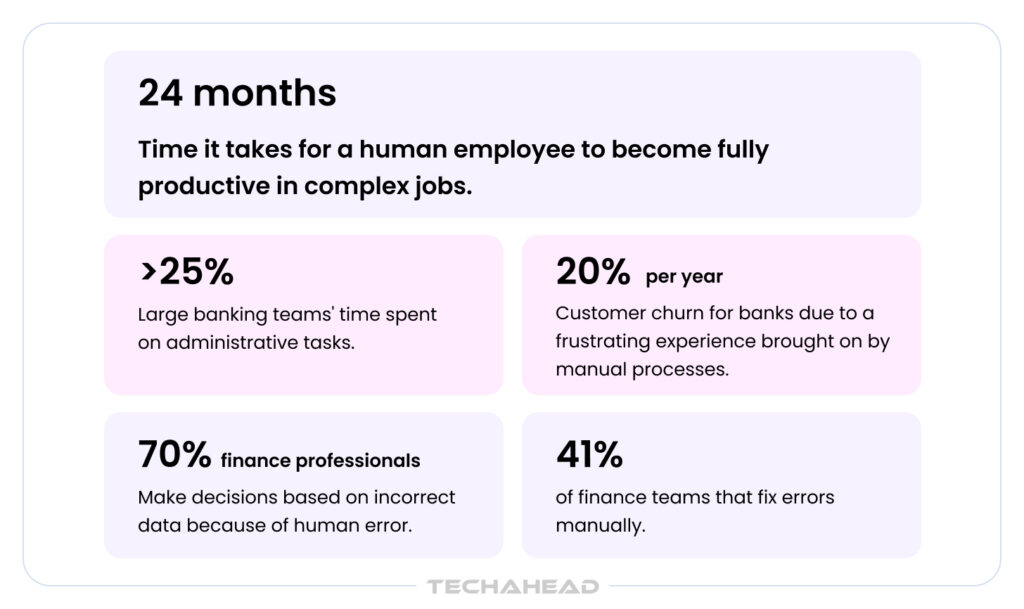
Decision AI Agent:
- Matches invoices against purchase orders in ERP system
- Validates vendors against approved supplier database
- Checks budget availability for relevant cost centers
- Applies approval routing rules based on amount and department
- Automatically processes invoices below certain thresholds
Integration: Agents connect to NetSuite (ERP), Bill.com (accounts payable), DocuSign (approval workflows), and internal procurement databases through REST APIs. The orchestration layer coordinates the complete workflow from invoice receipt through payment scheduling.
Results:
- 80% cost reduction in invoice processing
- 20x faster application approval process
- Processing time decreased from 45 minutes to 2 minutes per invoice
- Error rate reduced to under 2% through automated validation
- Finance team redeployed to higher-value activities
Key Success Factor: Phased rollout starting with a single vendor category (office supplies) before expanding, allowing the team to refine agent logic and tune confidence thresholds with manageable complexity.
Case Study 3: Wells Fargo – Branch Banking Knowledge Retrieval
Organization: Wells Fargo, major US financial institution
Challenge: Branch bankers needed quick access to constantly changing policies, procedures, and regulatory information during customer interactions. Manual searching through documentation systems disrupted service flow and created delays.
Solution: RAG-based (Retrieval-Augmented Generation) tool for branch bankers deployed through Google Cloud’s Agentspace

Implementation: The system uses Apigee API Management to scale generative AI adoption across teams by building task-specific, reusable APIs that simplify experimentation and model integration. Branch bankers access the tool during customer interactions to retrieve current policies and procedures in real-time.
Results:
- 20% reduction in workflow time for query resolution
- Streamlined internal operations and shortened decision times
- Enhanced ability to serve customers with accurate, up-to-date information
- Improved compliance through consistent policy application
Integration: The system connects to Wells Fargo’s internal policy repositories, regulatory databases, and product information systems while maintaining strict security and access controls appropriate for financial services.
Key Success Factor: Focus on augmenting rather than replacing human expertise—branch bankers maintain customer relationships while AI provides instant access to comprehensive institutional knowledge.
Case Study 4: GitHub Copilot – Developer Productivity Enhancement
Organization: GitHub (Microsoft), serving 100+ million developers worldwide including most Fortune 500 companies
Challenge: Software development involves substantial repetitive work—writing boilerplate code, implementing standard patterns, writing tests, and reviewing code for common issues. These activities consume developer time that could focus on creative problem-solving.
Solution: GitHub Copilot, powered by OpenAI Codex models fine-tuned on billions of lines of public code

Capabilities:
- Suggests complete functions based on comments or function signatures
- Generates unit tests from existing code
- Creates documentation from code structure
- Identifies potential bugs and security vulnerabilities
- Recommends performance optimizations and coding best practices
Integration: Seamlessly embedded in VS Code, Visual Studio, JetBrains IDEs, and Neovim. Developers receive suggestions in real-time as they type, accepting, modifying, or ignoring them without breaking flow.
Results:
- 55%+ faster task completion for common programming activities
- Cursor (competing AI coding assistant) grew from $1M to $200M ARR in just over one year
- StackBlitz’s Bolt went from $0 to $20M ARR in two months
- Nearly 50,000 organizations use GitHub Copilot for Business
Enterprise Features: License compliance checking, code pattern approval workflows, security vulnerability scanning, usage analytics and cost monitoring, with custom training on private codebases as an upcoming feature.
Critical Design Choice: GitHub Copilot remains a copilot, not an autonomous agent—it suggests but never commits code automatically. This respects developer expertise while amplifying productivity, maintaining human control while offloading tedious work.
Reference: Industry publications and Microsoft/GitHub official announcements
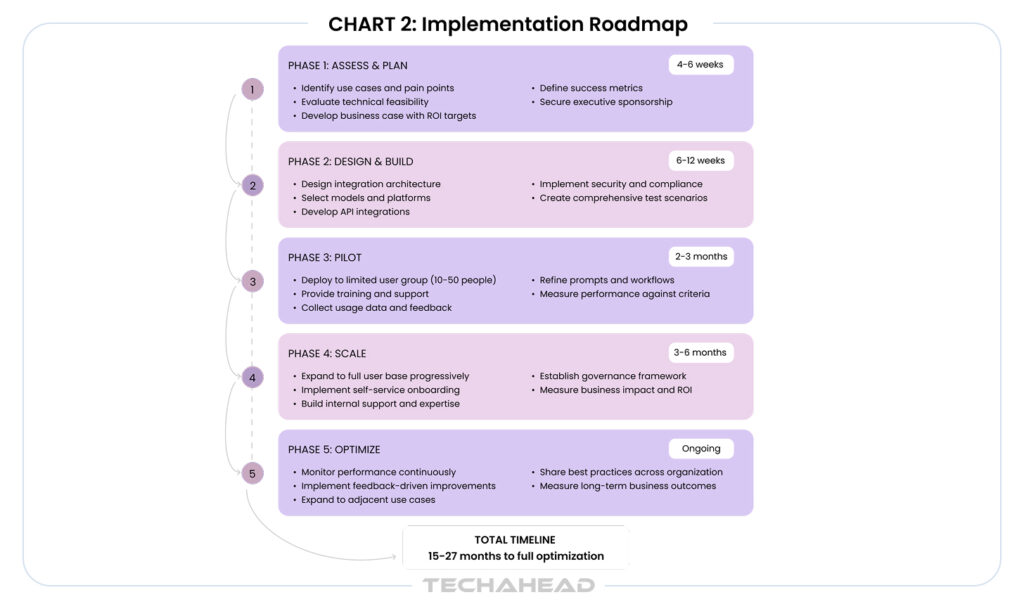
Source: TechAhead AI Team
Overcoming Common Integration Barriers
Technical Roadblocks
Legacy System Compatibility presents the most common technical barrier. Enterprises run mainframe systems, decades-old databases, and custom applications lacking modern APIs.
Solutions:
- API Wrapping: Create modern REST APIs that translate requests into legacy system protocols
- RPA Bridge: For systems without programmatic interfaces, RPA bots simulate human interaction
- Database Direct Access: Query databases directly when system APIs are inadequate (read-only for safety)
Latency Challenges impact user experience and limit agent capabilities.
Mitigation Strategies:
- Caching and Prediction: Cache frequently accessed data and predict likely next actions
- Asynchronous Processing: Provide immediate acknowledgment followed by asynchronous completion
- Progressive Disclosure: Return partial results quickly, then enhance with more detail
- Edge Deployment: Deploy lightweight models at the edge for immediate response
Data Silos fragment information across incompatible systems.
Solutions:
- Data Federation: Build unified query layers that aggregate results across multiple systems
- Master Data Management: Create canonical records that multiple systems reference
- Data Lakehouse: Replicate operational data into unified analytics platforms
Organizational Challenges
Resistance and Fear: Employees worry AI will eliminate jobs or expose knowledge gaps. McKinsey research shows fewer than 30% of companies report CEO sponsorship of AI initiatives, suggesting limited top-down support.
Mitigation Strategies:
- Transparent communication about augmentation versus replacement
- Early involvement of end users in design and testing
- Showcasing how agents eliminate frustrating busywork
- Reskilling programs for working with AI systems
Skill Gaps: Using AI agents effectively requires new capabilities—crafting effective prompts, verifying AI-generated analysis, and knowing when to escalate.
Training Approaches:
- Role-specific scenarios based on realistic job tasks
- Hands-on practice in sandbox environments
- Ongoing coaching with embedded AI specialists
- Internal communities sharing tips and best practices
Incentive Misalignment: Productivity improvements may conflict with existing metrics. If call center agents are evaluated on call volume, they’ll resist copilots that enable faster resolution.
Alignment Strategies:
- Redesign metrics to focus on outcomes rather than activities
- Create incentives for effective AI usage
- Demonstrate how AI proficiency creates advancement opportunities
- Provide redeployment pathways before implementing agents

Implementation Best Practices
Start Small, Scale Fast: Begin with focused use cases that demonstrate clear value, then expand progressively. The invoice processing example started with office supplies before expanding to all vendor categories.
Prioritize Integration Quality: Invest in robust APIs, comprehensive error handling, and graceful degradation from day one. Production-ready systems require attention to edge cases and failure modes.
Design for Humans: Keep users in control and make AI assistance opt-in initially. The most successful implementations enhance rather than replace human judgment.
Measure Everything: Track usage, performance, satisfaction, and business impact. Data-driven optimization drives the continuous improvements that create sustainable advantage.
Plan for Continuous Improvement: Initial deployment is just the beginning. Systematic feedback collection and incorporation drives compounding performance gains—organizations see 15-20% improvements over time through iterative refinement.
Designing for Success: Key Principles
Modular and Interoperable Architecture
Successful enterprise AI agents follow software engineering best practices proven effective in complex system integration:
Microservices Architecture breaks functionality into discrete, independently deployable services. A customer service agent might consist of authentication, NLP processing, retrieval, action execution, and audit logging services. This enables teams to update individual components without disrupting the entire system.
API-First Design ensures every agent capability exposes well-documented APIs that other systems can consume. Microsoft’s Copilot Studio exemplifies this—agents automatically expose REST APIs that applications can call, and they can consume external APIs to extend capabilities.
Event-Driven Communication enables loose coupling. Rather than agents directly calling each other, they publish events that interested systems subscribe to. This design tolerates component failures gracefully and simplifies adding new functionality.
Security, Privacy, and Compliance
Enterprise AI agents operate under significantly stricter constraints than consumer applications, particularly in regulated industries.
Permission-Aware Data Access: Agents must respect existing role-based access controls. Microsoft’s Retrieval API demonstrates this—when agents query Microsoft 365 content, results are automatically filtered based on the requesting user’s permissions.
Data Residency and Sovereignty: Many jurisdictions require certain data types remain within geographic boundaries. Cloud providers offer regional deployment options enabling agents to process data in compliant locations.
Audit Logging: Regulated industries require detailed records of data access and actions taken. Agents must generate comprehensive audit trails including user requests, agent responses, data accessed, actions taken, and any errors or security events.
Encryption: Enterprise agents require data-at-rest encryption (AES-256), data-in-transit encryption (TLS 1.3), secure key management, and end-to-end encryption for highly sensitive workflows.
Adaptive Learning and Continuous Improvement
Static AI agents become obsolete quickly as requirements evolve. Continuous learning mechanisms enable improvement over time:
Feedback Loop Integration: Capture user satisfaction signals through explicit feedback (thumbs up/down, surveys) and implicit feedback (task completion rates, escalation frequency). McKinsey research highlights how systematic feedback collection enables agents to codify new expertise over time.
Prompt Optimization: Rather than model retraining, many improvements come from better prompts. A/B testing frameworks enable systematic optimization. Intercom’s AI platform improved containment rates from 68% to 79% over six months through prompt refinement.
Knowledge Base Currency: Agents require mechanisms to incorporate new information through retrieval-augmented generation, automated knowledge ingestion, and version control with rollback capabilities.
Conclusion
The transformation from experimental AI pilots to production-scale agents that seamlessly integrate with enterprise workflows represents one of the defining challenges and opportunities of modern business technology. Success requires more than just deploying powerful AI models—it demands careful workflow analysis, robust API architectures, security expertise, and organizational change management.
The enterprises achieving meaningful results share common characteristics: they start with clearly defined business problems, design modular and interoperable solutions, invest equally in technology and change management, and commit to iterative improvement based on measured outcomes.
As you embark on building AI agents and copilots for your enterprise, remember these principles: Start with business value, define specific problems and measurable outcomes before selecting technologies. Design for humans, leveraging complementary strengths of human judgment and AI processing. Prioritize integration quality with robust error handling and comprehensive monitoring. Invest in organizational change through training, communication, and incentive alignment. Commit to continuous improvement through systematic feedback collection and incorporation.
The future belongs to enterprises that successfully integrate AI agents into their operational fabric—not as standalone experiments but as essential components of how work gets done. The market growth from $5 billion to $13 billion in a single year signals massive momentum. The question isn’t whether to integrate AI agents, but how quickly and effectively you can make it happen.
Ready to Transform Your Enterprise with AI?
TechAhead brings over 16 years of mobile app and software development expertise to help enterprises navigate the complex landscape of AI agent implementation. Our team has deployed AI solutions across industries—healthcare, finance, retail, manufacturing—delivering measurable results through rigorous planning and optimization.
Whether you’re building customer service copilots, automating back-office workflows, or creating industry-specific AI agents, TechAhead’s proven methodology ensures you select platforms that fit your specific requirements and deliver ROI from day one.
Contact TechAhead today to assess your orchestration needs, benchmark potential platforms against your workflows, and build a roadmap for implementation that delivers measurable results with confidence.
Transform workflows. Amplify productivity. Build with TechAhead.
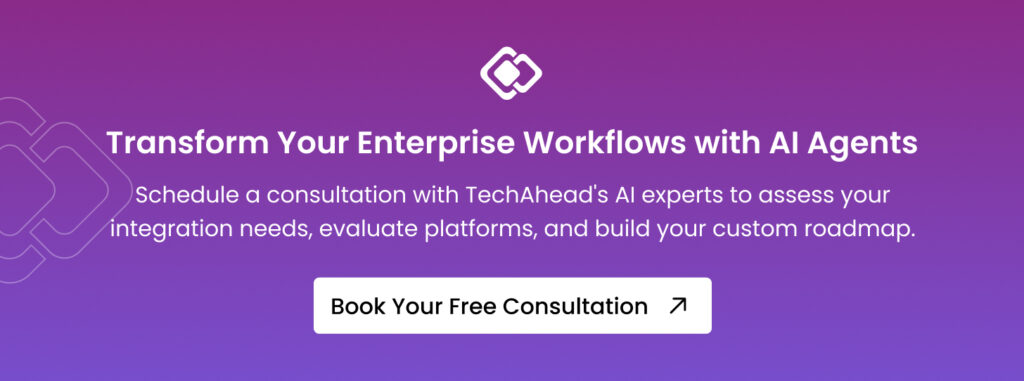
Copilots assist humans by providing suggestions and automating subtasks while keeping users in control. Agents operate autonomously, planning multi-step workflows independently.
Through REST APIs, GraphQL endpoints, webhooks, and middleware platforms that connect to CRMs, ERPs, databases, and legacy systems while maintaining security.
Unauthorized data access, permission violations, compliance breaches, audit trail gaps, and data residency requirements. Robust governance frameworks and comprehensive logging mitigate risks.
Yes, through continuous learning mechanisms including user feedback integration, prompt optimization, knowledge base updates, and human-in-the-loop refinement enabling systematic improvement.
Financial services, healthcare, customer service, software development, supply chain, and professional services see significant benefits through workflow automation and intelligence augmentation.
Proof-of-concept requires 2-4 weeks, pilot deployments 2-3 months, limited production 3-6 months, and full deployment 6-12 months with measurable ROI.
Microsoft Copilot Studio, AWS Bedrock, Google Vertex AI, and IBM watsonx Orchestrate. Choice depends on existing infrastructure, requirements, and integration needs.




